I’m not sure how to write about alabama chanin without gushing. I’m also really not sure how or why it took me so long to come around to alabma chanin style garments. But why spend time pondering the past when you could be hand-stitching the future?!
I think the turning point was when I saw Natalie Chanin’s newest book, Alabama Studio Style, at the Seam Allowance sewing group at A Verb for Keeping Warm. I think that was in March or April. Maybe I’m just a sucker for styling, but I feel like it clicked: I could see myself wearing so many of those garments, whole outfits, head-to-toe ornate, organic cotton jersey, and I was fascinated by the intricate patterning.
I waited patiently, dropping not-so-subtle hints to my partner that this book would be a great birthday present, but ultimately I bought the book myself a few weeks ago (after receiving other, equally wonderful and thoughtful birthday gifts). While it’s a very technical book in many ways, providing straightforward overviews of previous books and techniques, it’s also a gorgeous, escapist dream of a book. I’ve read it through several times now, and have been picking out different portions to re-read before bed. Sometimes I just look at the pictures and hold the pages closer to my face, studying the details and letting the style wash over me. Am I gushing yet?
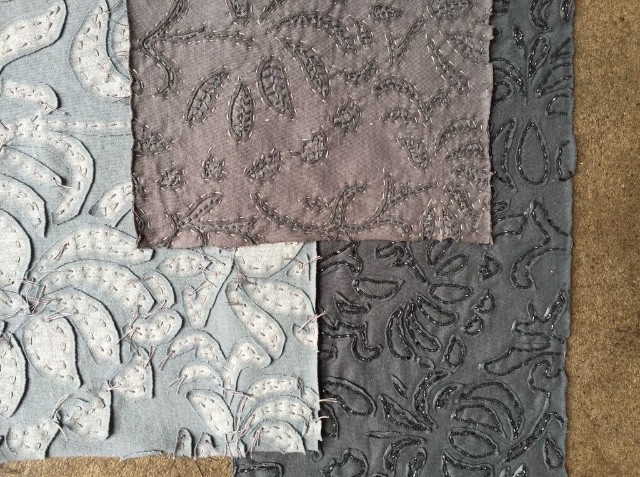
Photo of the Alabama Chanin trunk show via A Verb for Keeping Warm twitter
Anyway, if you can even get past the skilled handiwork of alabama chanin embroidery, there is the matter of the material: alabama chanin produces their own line of organic, US-grown, milled, knit and dyed cotton. This no-small-feat of fabric is the foundation for the alabama chanin line and slow-fashion ethos. There is a beautiful post on their Journal about it, and I highly recommend listening to the Thread Cult interview with Natalie Chanin to learn more. Suffice to say it is a rare and courageous commitment to textiles.
I’m incorporating one or two alabama chanin pieces into my fall/winter wardrobe planning and I want to budget for buying their cotton jersey by the yard, but I wanted to experiment first so I could get the hang of the stenciling and hand stitching. I went to my local Goodwill and searched the racks for good quality cotton jersey tee shirts, as big as I could find, in the hopes of trying some of the double-layered fabric techniques. It took a surprisingly long time, and made me sad that yet another symptom of fast fashion is fabric of such poor quality that after a few wears it’s hardly worth buying. But I digress. I found 5 strong candidates and scooped them up.
The A-Line dress jumped out at me immediately as a garment I would wear all the time: a v-neck, lots of ease, and not too frilly. But I wanted to start with a baby step, a smaller garment to test the applique waters and work with one of the thrifted tees, so I’m making a slightly cropped, slightly off-grain A-Line top. The front and back are each cut out of two pieces, but with the swingy shape I couldn’t quite cut them out from my deconstructed tee, so I ended up adding side panels to create the pattern pieces.
With the panels stitched up, I turned to the stenciling. I love the allover stenciling but knew that I had very limited fabric (just the tee scraps since I wanted to keep it monochromatic) and so I sought inspiration in the pieces where the flowers curl and cascade around the edges. With my printed Magdalena stencil on the floor I laid the tracing paper pattern pieces over different portions of the pattern to get a sense of composition (see photo above). (note that the patterns and stencils included with the book are formatted for copy-shop size printing; I used the “poster” setting in Adobe to tile them for printing at the library).
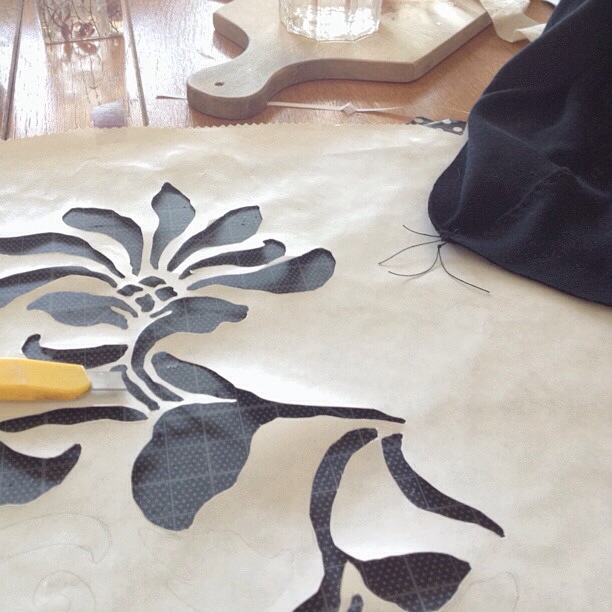
Once that was set, I traced the stencil onto freezer paper and cut out the design with an exacto knife. The freezer paper trick was highly recommended to me by a classmate in a recent course at the Textile Center here in Minneapolis, and I’m so thankful she mentioned it! Freezer paper has a wax coating so you can just iron it onto your fabric and it adheres, making it really easy to brush on some fabric paint. I used cheap fabric paint from Michael’s (my nearest resource) and would like to find a more environmentally-friendly alternative, if anyone has suggestions, I’m all ears!
I was really pleased that I could reuse the stencil by peeling off the freezer paper (once the paint was dry) and then placing it over my fabric scraps. I really had to squeeze the stencil pieces onto the scraps which turned out to be a fun puzzle. Now I’m in the process of stitching on the stencil pieces and it is absolutely addicting! I enjoy machine sewing but find it kind of stressful at times because I worry about breaking needles, steady topstitching, and even thread tension… but from the moment I cut out the pattern pieces and throughout the stenciling and applique, my alabama chanin DIY process has been refreshingly peaceful.
And when I’m not stitching, I’m admiring the Alabama on Alabama show at Heath Ceramics’ Boiler Room in San Francisco, partly cursing myself that I moved before it went up, and partly soaking it all in through the internet (photo above by Leslie Santarina via SF Girl by Bay; photo below via The Merchant Home blog).
Have you made any Alabama Chanin-style garments? Have you checked out #alabamachanin on instagram? Do it, and swoon with me!
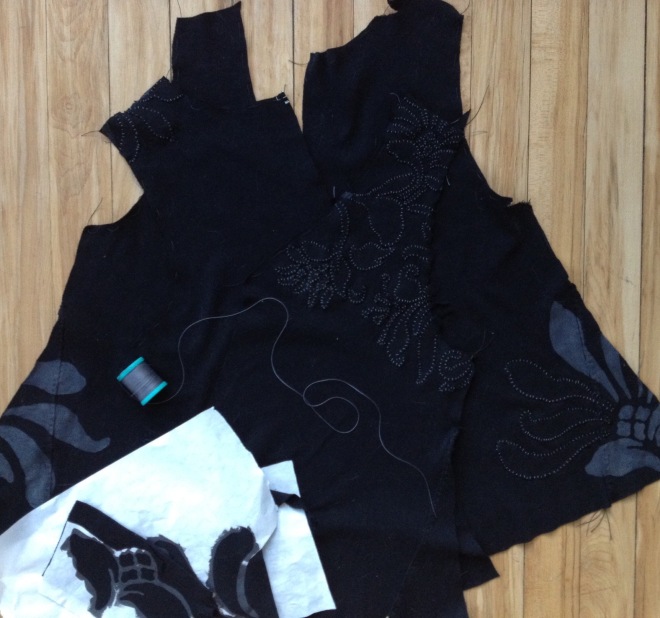
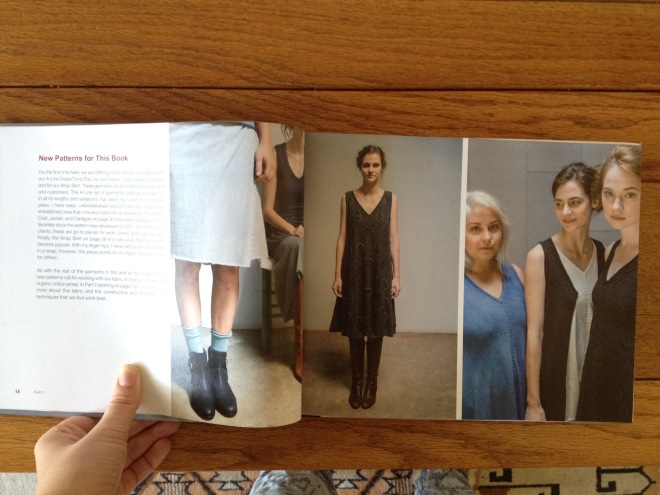
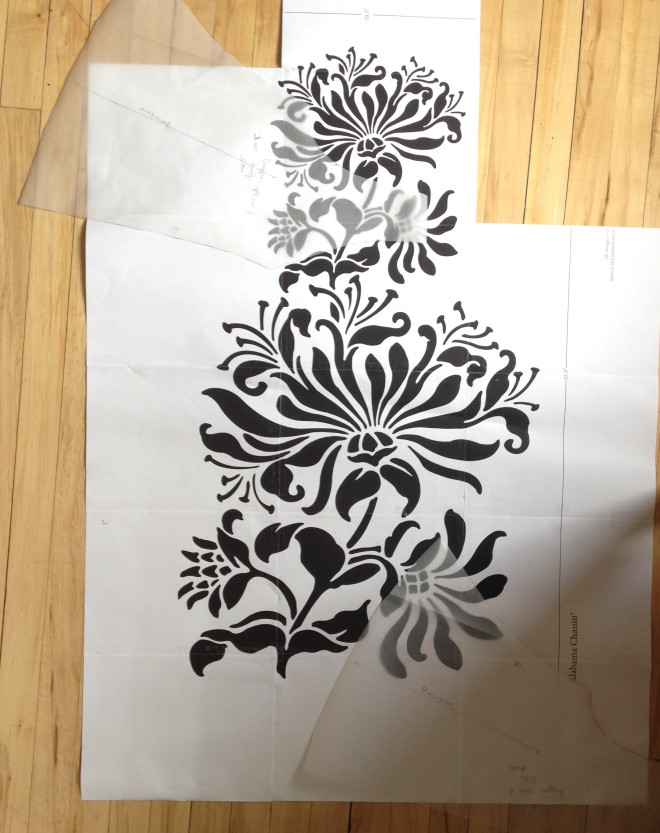
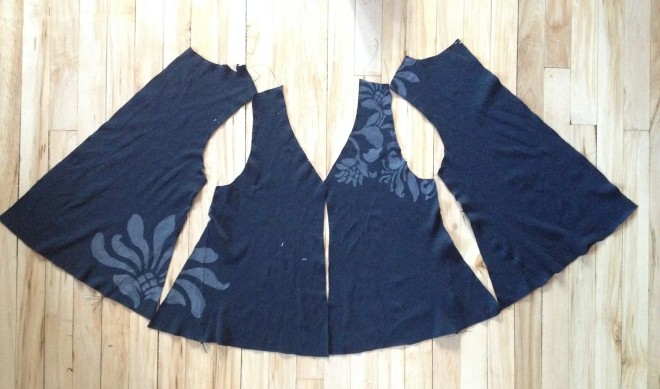
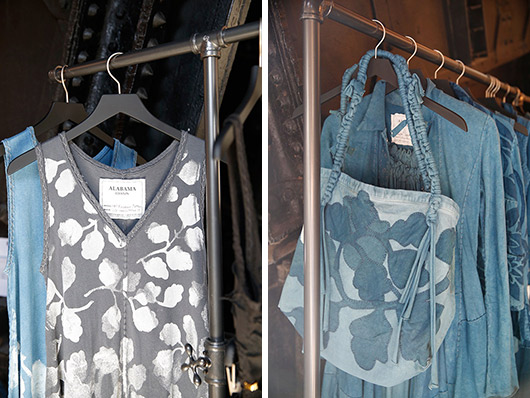
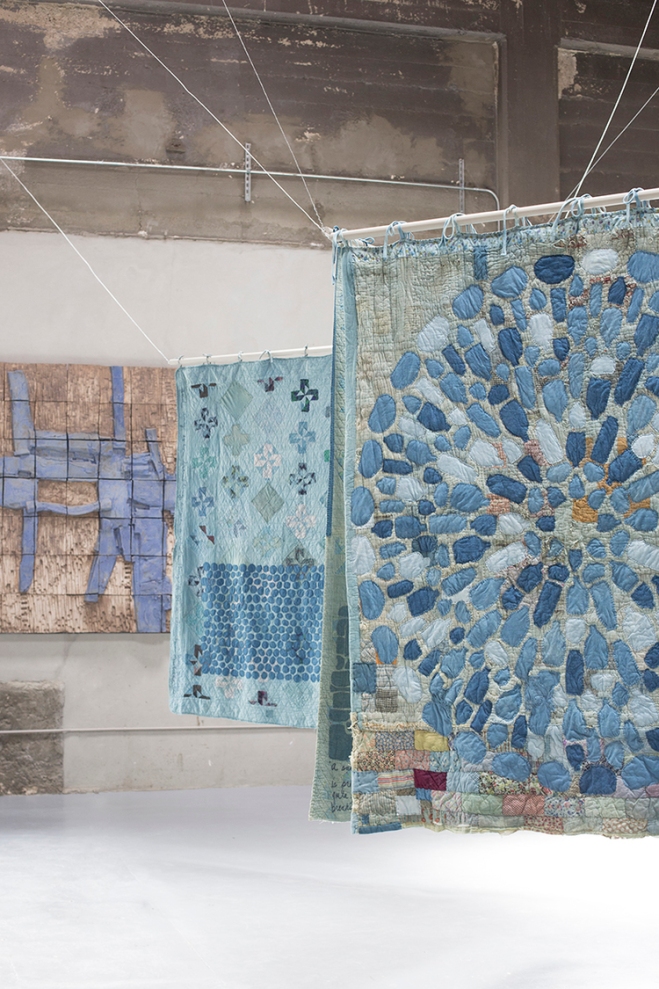
I love stitching and wearing AC, but the fact that you end up cutting away and then throwing away, so much of that beautiful organic cotton has come to worry me more and more ( from a wasting the world’s resources POV) and I’m not quite sure what the answer is. Mary
LikeLike
yes, I wonder about that too! I haven’t made any reverse applique garments (I think that’s the cutaway technique right?) but maybe it’s possible to salvage the scraps and use them for applique? Since I’m working with direct applique for this first garment, I’m using the scraps of the t-shirt that I cut up to refashion it into a tank, and it’s almost a zero-waste refashion. Since AC yardage is organic cotton, it’s probably safe to compost the scraps too.
LikeLike
Yes, reverse appliqué is the cutaway technique. I’ve made a dress and a maxi skirt. Like you, I’m tall (6’1″) and that’s a hell of a lot of fiddly little scraps of cotton once you’ve cut them all out (not to mention : a lot of expensive yardage you’re chucking away – if you’ve bought the fabric from AC and haven’t thrifted it). Realistically, I don’t think I’m going to appliqué it all back on to something. Composting is a thought – although I’ m not sure if the dyes would be good for the compost. They do have some organically dyed stuff – but most of it isn’t. I’m not trying to rain on AC’s parade here – I’ve made and love their stuff: I’m just not sure about how much it addresses issues of waste. Mary
LikeLike
Just to add to my previous post. Of course, you don’t have to use the reverse appliqué technique. But that IS how they get many of their best (in my opinion) effects. Mary
LikeLike